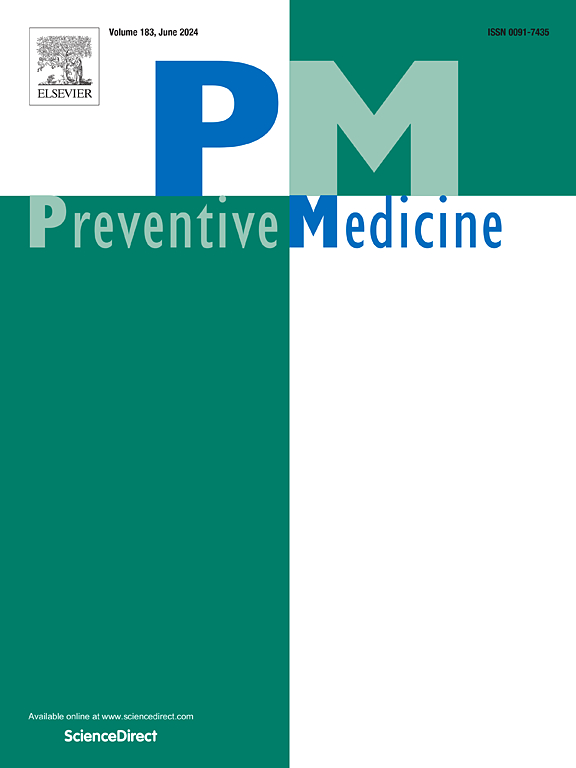经历枪击事件的美国K-12学校的支持人员分布:匹配分析
IF 3.2
2区 医学
Q1 MEDICINE, GENERAL & INTERNAL
引用次数: 0
摘要
目的比较发生和未发生枪击事件的美国K-12学校的学校警察、保安、护士、心理学家、社会工作者和辅导员的存在率和比率。方法学校枪击事件被定义为2017年至2019年期间新闻界和Everytown枪支安全组织记录的在校园内任何实弹射击。利用民权数据收集(2017-2018),我们比较了2017-2019年期间200所发生枪击事件的学校和86079所没有发生枪击事件的学校的人员配置模式。使用32个学校、地区和社区水平的协变量进行倾向得分匹配,产生了180所受枪击影响学校和11063所匹配对照的分析样本。我们调查了学校警察、保安、护士、心理学家、社会工作者和辅导员的患病率和每1000名学生的比率。结果发生枪击事件的180所学校中,学校警察的患病率高于对照组(50.6%比41.8%;差异:8.8个百分点[95% CI, 1.6-15.9])。然而,这些学校每1000名学生中护士的比率明显较低(1.37 vs 1.88;差异:−0.50[−0.95至−0.06]),心理学家(0.81 vs 1.44;差异:−0.63[−0.98至−0.28]),辅导员(2.94 vs 3.71;差异:−0.77[−1.25至−0.29])。这些模式在多个敏感性分析中保持一致。结论:与对照学校相比,发生枪击事件的学校健康和精神卫生人员的比例较低,但执法人员的比例较高。这些发现表明需要增加对心理健康资源的投资,并重新评估当前的学校安全方法。本文章由计算机程序翻译,如有差异,请以英文原文为准。
Support staff distribution in K-12 US schools that experience shootings: A matched analysis
Objective
To compare the presence and rates of school police officers, security guards, nurses, psychologists, social workers, and counselors between US K-12 schools that did and did not experience shooting incidents.
Methods
School shootings were defined as any discharge of a live firearm round on school grounds, as documented by the press and recorded by the Everytown for Gun Safety between 2017 and 2019. Using Civil Rights Data Collection (2017–2018), we compared staffing patterns between 200 schools that experienced shootings and 86,079 schools without incidents during 2017–2019. Propensity score matching using 32 school-, district-, and community-level covariates yielded analytical samples of 180 shooting-affected schools and 11,063 matched controls. We examined the prevalence and per-1000-student rates of school police officers, security guards, nurses, psychologists, social workers, and counselors.
Results
The 180 schools that experienced shootings showed higher prevalence of school police officers compared to matched controls (50.6 % vs 41.8 %; difference: 8.8 percentage points [95 % CI, 1.6–15.9]). However, these schools had significantly lower rates per 1000 students of nurses (1.37 vs 1.88; difference: −0.50 [−0.95 to −0.06]), psychologists (0.81 vs 1.44; difference: −0.63 [−0.98 to −0.28]), and counselors (2.94 vs 3.71; difference: −0.77 [−1.25 to −0.29]). These patterns remained consistent across multiple sensitivity analyses.
Conclusions
Schools that experienced shootings demonstrated lower rates of health and mental health staff but higher law enforcement presence compared to matched control schools. These findings suggest the need for increased investment in mental health resources and reevaluation of current school safety approaches.
求助全文
通过发布文献求助,成功后即可免费获取论文全文。
去求助
来源期刊

Preventive medicine
医学-公共卫生、环境卫生与职业卫生
CiteScore
7.70
自引率
3.90%
发文量
0
审稿时长
42 days
期刊介绍:
Founded in 1972 by Ernst Wynder, Preventive Medicine is an international scholarly journal that provides prompt publication of original articles on the science and practice of disease prevention, health promotion, and public health policymaking. Preventive Medicine aims to reward innovation. It will favor insightful observational studies, thoughtful explorations of health data, unsuspected new angles for existing hypotheses, robust randomized controlled trials, and impartial systematic reviews. Preventive Medicine''s ultimate goal is to publish research that will have an impact on the work of practitioners of disease prevention and health promotion, as well as of related disciplines.
 求助内容:
求助内容: 应助结果提醒方式:
应助结果提醒方式:


